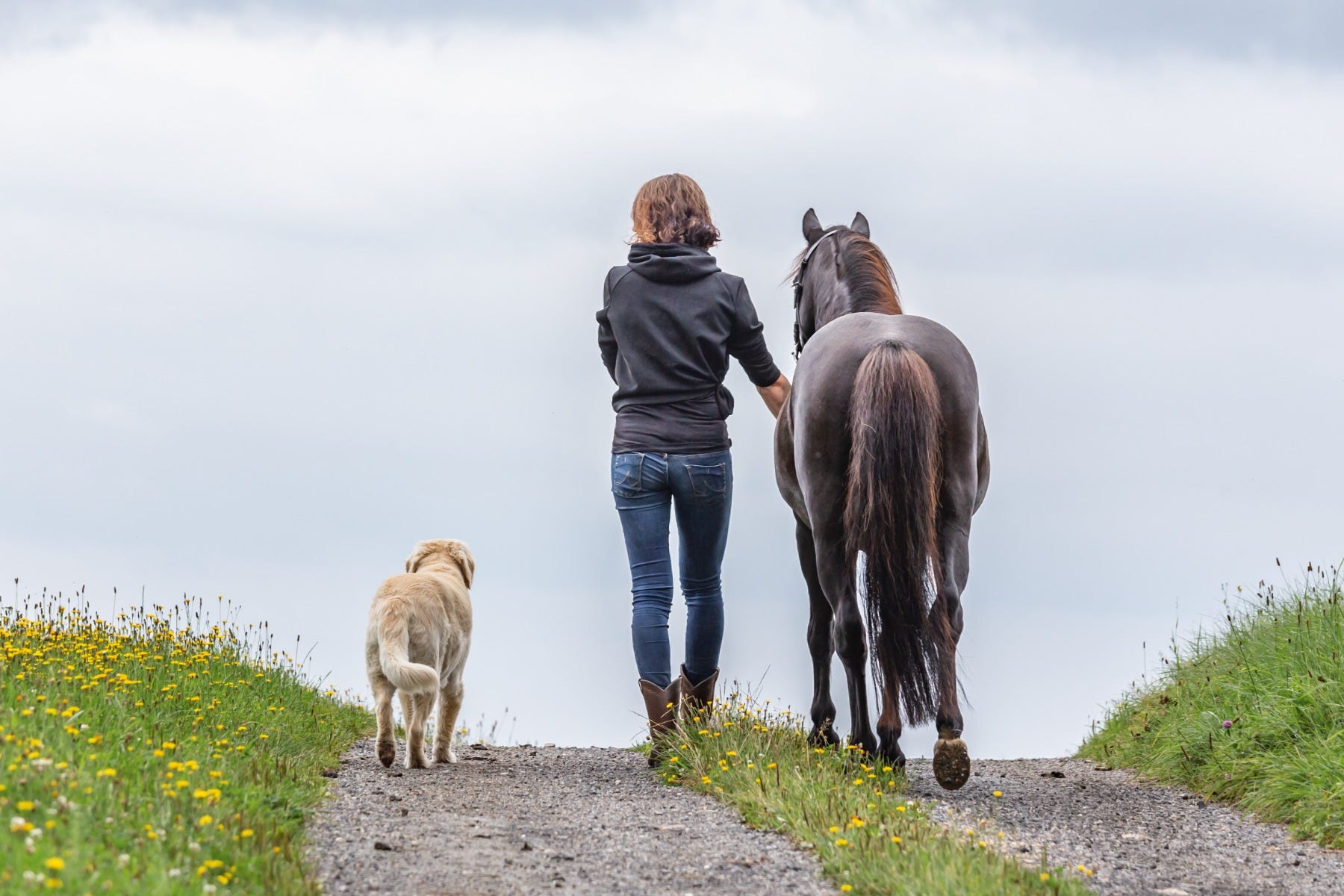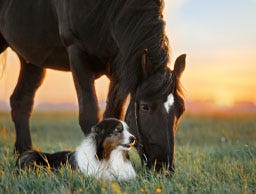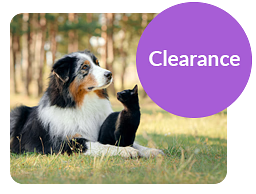The Relationship Between Dogs and Horses
If you own a horse, know someone who does, or spend a lot of time around stables, then you’ve no doubt noticed that dogs are pretty commonplace in these environments, but what does that mean for the horses? In this blog, we’re going to be looking at the relationship between dogs and horses and how domestication has allowed these two opposing animals to coexist together.
Can Dogs and Horses be Friends?
Asking if a dog can be friends with a horse seems as though it should be a simple no considering horses, at their core, are prey animals, whereas dogs are predators. That said, with the domestication of these two animals, they have learned to coexist peacefully alongside one another and, in some cases, even become friends.
Both animals are known for their intelligence and some studies have shown that both dogs and horses can recognise human emotions and respond in kind, so it stands to reason that this skill may also pass to other animals.
That said, the dogs and horses that are shown to be “friends” have likely become such through focused socialisation and training for both animals, and this is not something that should be expected to happen naturally. Introducing a dog to a horse is something that should be done with care and time, and you should never assume two animals will get along just because you’ve seen it happen before.

Can Dogs and Horses Play Together?
A recent study has shown that both dogs and horses share very similar behaviour when they’re feeling playful.
Dogs, for example, show they’re feeling playful by wagging their tail and bowing close to the ground as an invitation for other dogs or their owners to play with them. Two dogs playing together will then chase, jump up at, gently nip and roll on the floor together.
Horses show similar behaviour when they’re playful and often chase one another, rear up on their hind legs and paw at the earth, sometimes rolling onto their sides. Both of these animals also love to play with toys like balls and can solve puzzle toys to find treats.
Considering that these two animals share similar traits when it’s time to play, it shouldn’t be surprising they can sometimes show these behaviours with one another, as shown below.
While the prospect of a dog and horse playing together is adorable, it’s not necessarily something that should be encouraged. There is a very obvious size difference between dogs and horses, and while it all might be in the name of fun, there is a serious risk of your dog being hurt by your horse as they kick out their legs and roll on the ground.
Keeping Your Dog Safe Around Horses
While on the surface, it can seem like dogs and horses were born to be besties, these relationships all come down to the individual animal. A horse that has suffered a bad experience with a dog or other predatory animal may have a fear response to any other animal that isn’t a horse, and the same with dogs.
It is the instinct of a horse to be afraid of anything that resembles a wolf, so knowing how to keep your dog safe around horses is essential. Here are some of our tips of keeping your dog safe around horses:
- Always supervise when dogs and horses are in the same area and recognise their body language to ensure they’re both comfortable and not afraid of the other.
- Introduce them slowly so they can become accustomed to the presence of the other, starting with smell and slowly building up to letting them see one another before letting them free roam in the same area.
- Keep your dog on a leash around horses if they’ve unfamiliar with them.
- Make sure your dog is well trained, especially with recall and stay so you can call them back and keep them away from areas with horses.
As adorable as your horse and dog being friends might seem, it’s important to remember that these two species are not natural companions and shouldn’t be expected to behave as such. Always take care when introducing animals of different species to one another and remember animals may not always respond in ways you expect, even if your dog has been around horses before and vice versa. That said, with the right training and socialisation, these animals can learn to coexist peacefully.
If you want to learn more about your dog’s behaviour and how to train them, check out our Complete Training Guide below.
This post is an opinion and should only be used as a guide. You should discuss any change to your pet’s care or lifestyle thoroughly with your vet before starting any program or treatment.






























